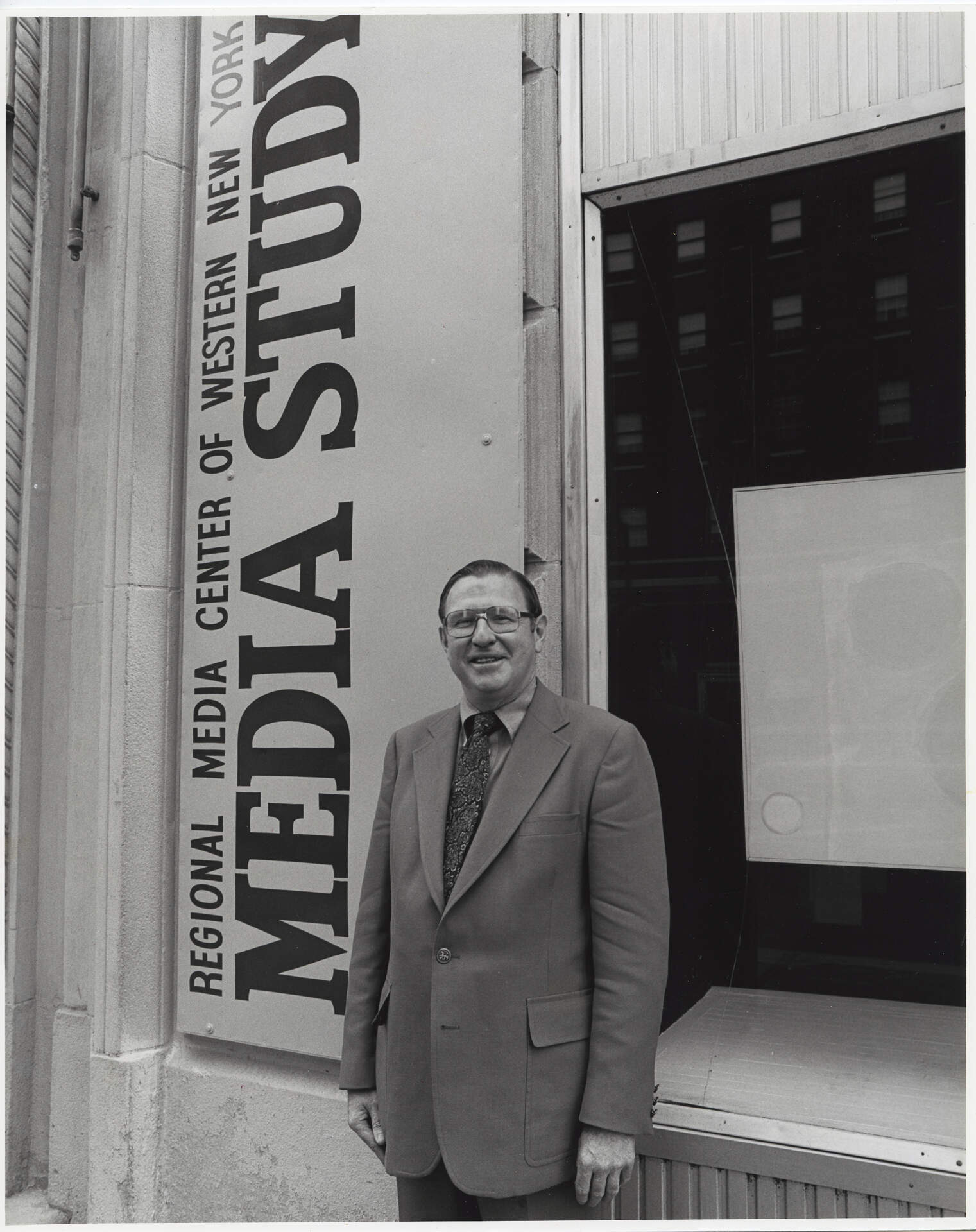Gerald O'Grady
(1931-2019)
Born: Cambridge, Massachusetts
Dr. Gerald O’Grady was a legendary media scholar and former University at Buffalo professor of English, who led the media revolution in Buffalo in the early 1970s, making Buffalo among the first cities in the nation to create a public access center for film and video equipment and education.
Dr. O’Grady, an Oxford-educated medieval scholar, established the Center for Media Study at the University at Buffalo and Media Study/Buffalo as a not-for-profit image center for Western New York. While Media Study/Buffalo acquired and lent media equipment to novice and accomplished artists and documentarians, the Center for Media Study formed a creative ensemble of visiting artists to educate graduate students. A steady stream of internationally regarded guest lecturers found an anchor for their activities at the Center for Media Study with an equally regarded assembly of resident faculty-artists from every media discipline.
Gerald O’Grady’s first career was as a medievalist. After studying for a Ph.D. at the University of Wisconsin (1954-58), he was a Marshall Scholar at St. Antony's College, Oxford University, for the next three years, working with C. S. Lewis, J. R. R. Tolkien, and Beryl Smalley. He had a huge impact on culture in Buffalo and the world. He was a thought leader, it turned out, along with colleagues John McHale and Marshall McLuhan. The plowshare of his medievalist studies became the camera of a new media for the late twentieth century.
Before moving in 1967 to the State University of New York at Buffalo, he established a Media Center in Houston, Texas under the auspices of John and Dominique deMenil, reflecting his interest in the coming impact of technology on education (McLuhan) and his interest its reform. At that time, in film, there existed only graduate programs in production at NYU, UCLA and USC, and he began to explore curricula for the establishment of historical, interpretive and cultural studies in the field of media. He visited over 100 campuses to observe beginning courses and programs in film or cinema study and, to better understand existing institutional structures, taught seven courses at five different universities each week for the next three years, traveling more than 5000 miles each week between Buffalo, Austin, Texas (Department of Radio/Film/Television), Houston and New York City (Columbia University School of the Arts; New York University Department of Cinema Studies, and New School of Social Research Center for Understanding Media).
He established three new organizations, for all of which he simultaneously served as Director: (1) The Educational Communications Center at SUNY at Buffalo that served all of the media production and classroom exhibition needs of 128 departments and included management of the Public Radio Station, a studio transmitting engineering and business courses to industries on cable television, and the foreign language laboratory; (2) The Center for Media Study, an academic department that offered undergraduate and graduate degrees in film, video and digital production and in media interpretation; and (3) Media Study/Buffalo, a regional community development center that provided access to equipment, workshops and nightly exhibition of media to the Buffalo community.
Media Study/Buffalo was a free-standing public not-for-profit institution, independent from the University, of which he was founder and President of the Board. It provided job training for the unemployed and produced public service materials and other programs for community institutions and city/county/state agencies. Through Media Study/Buffalo he became the producer and host of programs to bring the works of independent media-makers to the attention of national television audiences (Film-Makers and The Frontier through WNED-17 PBS in Buffalo, and The Independents through The Learning Channel in Washington, D. C., which was the first satellite transmission of such works to cable and public stations).
He also was Project Director for two prize-winning documentaries for public television, America Lost and Found and The World of the Fair, both supported by The National Endowment for the Humanities. In all of these projects, the focus was on giving a voice to individuals who had not been heard, supporting a full participation of all persons in civil society and he brought together the finest film, sound and video artists in the world. Their presence in Buffalo helped transform an industrial city into one of higher education and cutting edge art.
During these same years, he served on the media panels of the New York State Council for the Arts, the New York Humanities Council and the National Endowment for the Arts and the National Endowment for the Humanities, and played a role in establishing the guidelines for the support of artists and scholars by each agency, while serving on national committees for the John and Mary Markle and Rockefeller Foundations to set priorities for support of national media resources and services.
Also during these years, he delivered through 1995 over 100 lectures on media pedagogy and the support of independent filmmakers to national and international audiences. In 1994 he became a Ford Foundation Fellow at the W.E.B. Du Bois Institute of Afro-American Research at Harvard, while consulting and teaching globally.
